Student Author
Andrew Calloway, Chapman University
NOTE: Student submissions of soluprobs are welcomed at babbie@chapman.edu
ANOTHER NOTE: I posted an earlier piece on the Gulf of Tonkin Resolution, and this student submission brings additional evidence to the discussion.
Background Narrative
After World War II, the United States was involved in a Cold War with the Soviet Union. The United States began to adopt the foreign policy of containment that was implemented throughout the 1940s-1960s. The containment policy was the effort in “trying to prevent the Soviet communism from expanding its empire.” (Rosati, Jerel A. & Scott, James M. 2014:29-32)
The containment policy was proposed in the Truman Doctrine in 1947 when containing communism in Greece and Turkey. Hodgson a political analyst described the Truman Doctrine as containing “the seeds of American of economic aid, economic or military, to more than one hundred countries; of mutual defense with more than forty of them…” (Hodgson 1976:32) Other academics believe the containment policy led to national security concerns influencing United States foreign policy for the entirety of the Cold War.
Presumed Problem
In the 1950s the United States began to worry after the creation of the People’s Republic of China and the beginning of communism in the Asian continent. This was also shown in the conflict in Korea during 1950-1953.
In February 1950, the National Security Council (NSC) passed NSC document 64 stating that Indochina was “a key area under immediate threat.” Again in 1952, the NSC passed another document on Indochina, NSC document 68. In 1954, President Eisenhower brought up the domino theory in one of his speeches, this belief was if Vietnam fell into communism, then neighboring countries in Southeast Asia will fall under communist rule as well, most particularly Laos and Cambodia. This idea brought a more militaristic approach in containing communism and increased United States involvement in Vietnam throughout the 1950s-1960s. (Kissinger, Henry 2003:13-20)
By the end of the Eisenhower administration in 1960, Eisenhower warned John F. Kennedy of the conflict of Vietnam as crucial. Eisenhower did not want the domino theory to become a reality. Under the Kennedy administration, stopping communism in Vietnam became a huge political interest, and would be considered a victory for the United States against the Soviet Union in political ideologies. According to Kissinger, by the time President Kennedy took office, there were 900 American military personnel in Vietnam, 3,164 in 1961, and almost tripled to 16,263 by 1963. (Kissinger 2003:34)
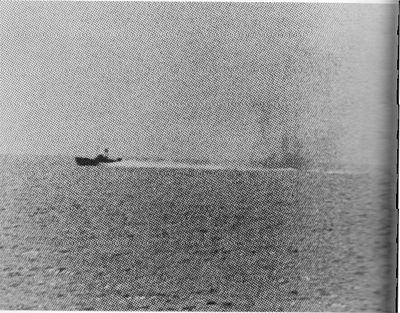 The escalation and political controversy in Vietnam began in August 1964 when news came back to the United States that North Vietnamese forces attacked the destroyer USS Maddox near the Gulf of Tonkin, this would later be called the Gulf of Tonkin incident, and led to a push for further military involvement in Vietnam by elected officials in Washington D.C. (Kissinger 2003: 35)
The escalation and political controversy in Vietnam began in August 1964 when news came back to the United States that North Vietnamese forces attacked the destroyer USS Maddox near the Gulf of Tonkin, this would later be called the Gulf of Tonkin incident, and led to a push for further military involvement in Vietnam by elected officials in Washington D.C. (Kissinger 2003: 35)
Solution to the Problem
The Gulf of Tonkin incident took place on August 2, 1964, two days later on August 4, President Johnson announced the Gulf of Tonkin Resolution and it immediately passed on August 7, giving Johnson the authority to increase U.S. involvement in Vietnam. The Tonkin Gulf resolution gave Johnson and Nixon legal basis for implementing military policies in Vietnam since the resolution was approved by the legislative branch of the U.S. government. The resolution was passed almost unanimously, the House vote was 416-0, and the Senate vote was 88-2. The two Senators who opposed the resolution were Democratic senators Wayne Morse of Oregon, and Ernest Gruening of Alaska. (Public Law 88-408, 88th Congress, August 7, 1964)
The solution to the Gulf of Tonkin incident would become a major setback for the United States in preventing communism, and a huge drop in public opinion regarding both the Vietnam War and approval of the United States government. The signing and approval from Congress expanded the powers of the Executive branch as stated in the resolution that the President as Commander in Chief should “take all necessary measures to repel any armed attack against the forces of the United States.” The next two sections of the Gulf of Tonkin resolution addresses the U. S. national interest and bringing peace and security to Southeast Asia. This later became a problem when Congress lacked sufficient knowledge of the situation and was unable to affect the military policies passed by the President later into the conflict. (Public Law 88-408, 88th Congress, August 7, 1964)
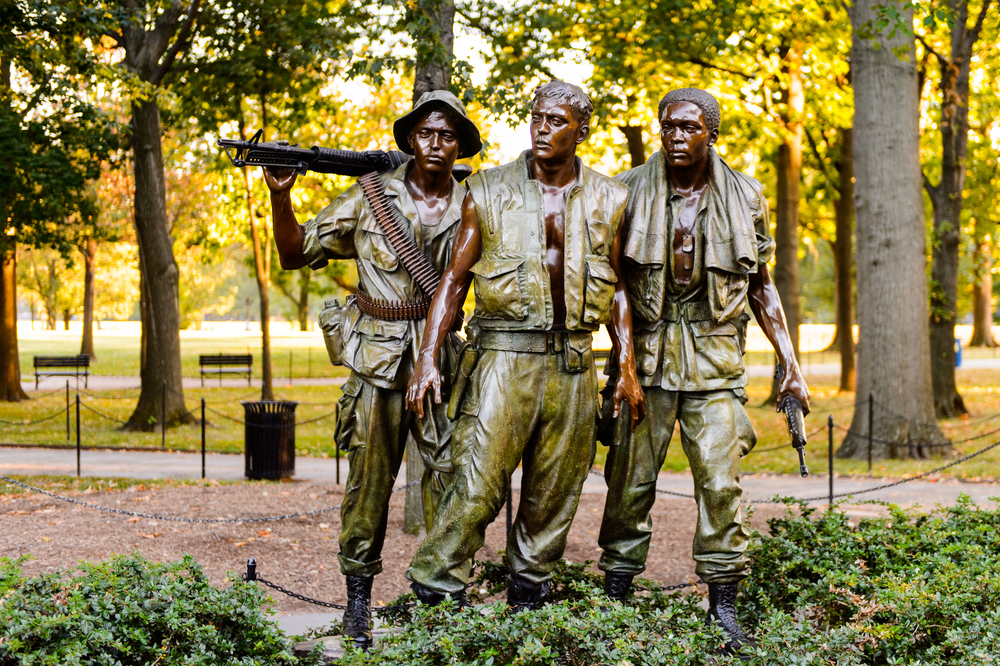
Empirical Evidence that the Problem did not exist
According to Lieutenant Commander Pat Paterson of the U.S. Navy stated that some of the information of what happened at the Gulf of Tonkin was “cloaked” and not really explained in the decision making process between the Secretary of Defense Robert McNamara and President Johnson in 1964. Recent documents of classified information being released in 2005 and 2006 have revealed many facts of what really happened in the Gulf of Tonkin incident and have helped historians reconstruct the incident.
In one of the reports by the NSA it states the second attack did not happen at the night of August 2, 1964. But by 1965 President Johnson has issued air raids and bombing campaigns under the codename Rolling Thunder, the United States began to use as much force possible to end the war quickly. This proved to not be the case as much as 500,000-600,000 American troops were committed in the Vietnam War by 1969.
The war began to be costly as it became to be estimated as much $173 billion was spent, and about 58,220 Americans dead, and 1,643 missing. It is still a problem today with Vietnam war veterans suffering from PTSD. (Kissinger 2003: 36-38) (Naval History Magazine 2008: Volume 22 Number 1)
Consequences of the “Solution”
With the evidence provided, the Gulf of Tonkin incident and the increased involvement in the Vietnam War greatly changed the powers and policy making of the United States government. Near the end of the Vietnam War (1969-1973), public opinion towards the Vietnam War, along with the Civil Rights protests, led to a strong opposition and push for bringing American soldiers back to the United States. This led to Congress becoming more aggressive in its constitutional powers during times of war and conflict.
Congress became a more rational political actor during the Nixon administration, and began to analyze the cost and benefits of the Vietnam War as it was reaching its fourth US president being involved with the conflict. A hypothesis by Burstein, and Freudenburg stated that “Congress will respond to public opinion.” It must have been public opinion with its strong opposition that made Congress turn against the Vietnam War, and ignore the political decisions made back in 1964. (Burstein, Paul & Freudenburg, William 1978:99-122)
By 1969, the policy of “Vietnamization” was proposed by the Nixon administration, even though Nixon opposed the idea to an extent. Nixon feared the image of American troops withdrawing from Vietnam as a loss for the United States and a victory for the communist regimes. The resolution was passed and by 1973 almost all American troops had withdrawn from Vietnam, and that same year Congress passed the War Powers Resolution stating that the President should consult with Congress in regard to decisions that engage U.S. forces and military.
In conclusion, the Vietnam War did have its negative consequences in casualties and the cost of funding for almost two decades, but at the same time it did reinforce the Constitutional powers and limitations on both the legislative and executive branches. Public opinion also stepped in to have a say on the war with the peace protests, and how people began to pay more attention to the government and its decisions on the war as it was the first televised conflict, with live coverage.
The Vietnam War with its complexities changed the way the public and politicians view foreign intervention for the remainder of the Cold War and leading up to the 21st century. As quoted by General Fred C. Weyand in 1976, “When the Army is committed the American people are committed, when the American people lose their commitment it is futile to try to keep the Army committed.” (Summers, Harry G. 1995:11-15)
Bibliography
Burstein, Paul & Freudenburg, William 1978. Changing Public Policy: The Impact of Public Opinion, Antiwar Demonstrations, and War Costs on Senate Voting on Vietnam War Motions The University of Chicago Press
Kissinger, Henry 2003. Ending the Vietnam War: A History of America’s Involvement in and Extrication from the Vietnam War Simon & Schuster Inc.
Moise, Edwin E. 1996. Tonkin Gulf and the Escalation of the Vietnam War University of North Carolina Press
Paterson, Pat 2008. Naval History Magazine: The Truth About Tonkin Volume 22, Number 1, U.S. Naval Institute
Rosati, Jerel A. & Scott, James M. 2014. The Politics of United States Foreign Policy Cengage Learning Inc.
Summers, Henry G. 1995. On Strategy: A Critical Analysis of the Vietnam War Presidio Press
Tonkin Gulf Resolution; Public Law 88-408, 88th Congress, August 7, 1964. General Records of the United States Government; Record Group 11; National Archives
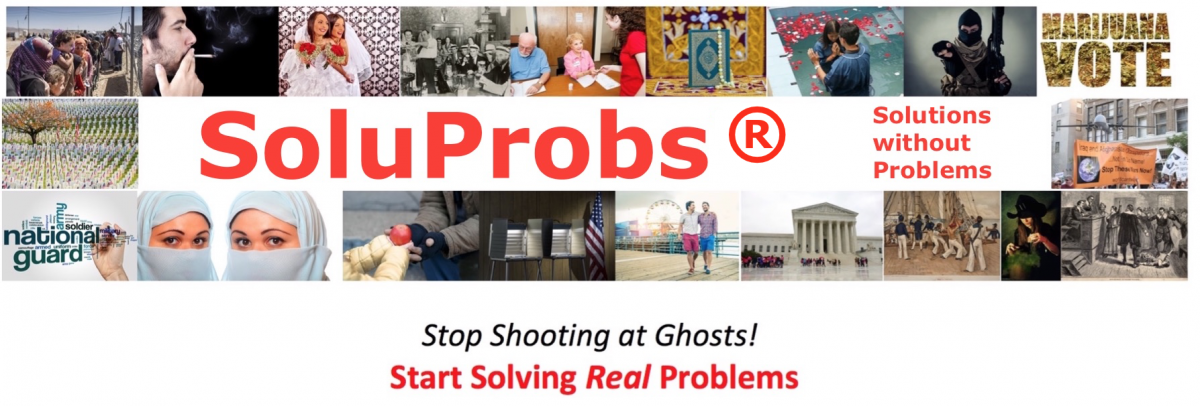
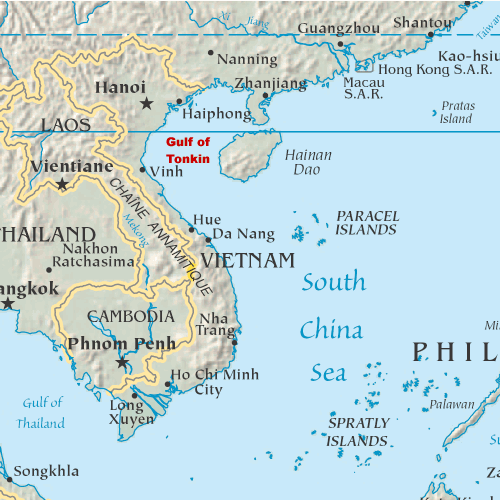

 Cairo came under attack by a mob protesting an anti-Muslim film produced earlier in California. While the Cairo attack was underway, another mob attacked the American consulate in Benghazi, Libya. Four Americans, including Ambassador Chris Stevens, were killed in the latter attack.
Cairo came under attack by a mob protesting an anti-Muslim film produced earlier in California. While the Cairo attack was underway, another mob attacked the American consulate in Benghazi, Libya. Four Americans, including Ambassador Chris Stevens, were killed in the latter attack.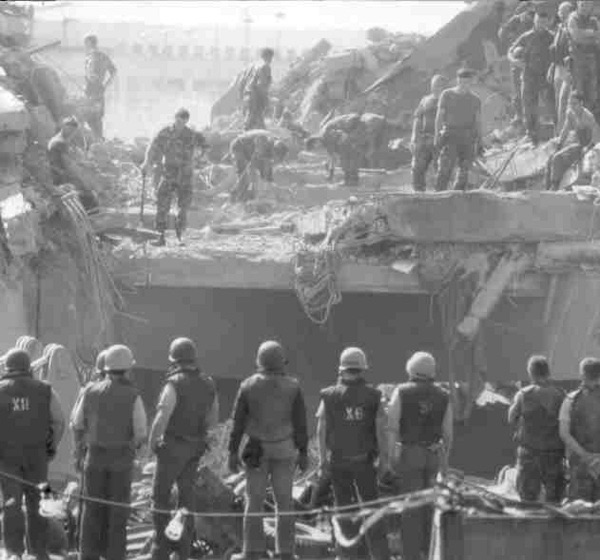 Marine compound, killing two hundred and forty-one servicemen. The U.S. military command, which regarded the Marines’ presence as a non-combative, “peace-keeping mission,” had left a vehicle gate wide open, and ordered the sentries to keep their weapons unloaded. The only real resistance the suicide bomber had encountered was a scrim of concertina wire. When I arrived on the scene a short while later to report on it for the Wall Street Journal, the Marine barracks were flattened. From beneath the dusty, smoking slabs of collapsed concrete, piteous American voices could be heard, begging for help. Thirteen more American servicemen later died from injuries, making it the single deadliest attack on American Marines since the Battle of Iwo Jima.
Marine compound, killing two hundred and forty-one servicemen. The U.S. military command, which regarded the Marines’ presence as a non-combative, “peace-keeping mission,” had left a vehicle gate wide open, and ordered the sentries to keep their weapons unloaded. The only real resistance the suicide bomber had encountered was a scrim of concertina wire. When I arrived on the scene a short while later to report on it for the Wall Street Journal, the Marine barracks were flattened. From beneath the dusty, smoking slabs of collapsed concrete, piteous American voices could be heard, begging for help. Thirteen more American servicemen later died from injuries, making it the single deadliest attack on American Marines since the Battle of Iwo Jima.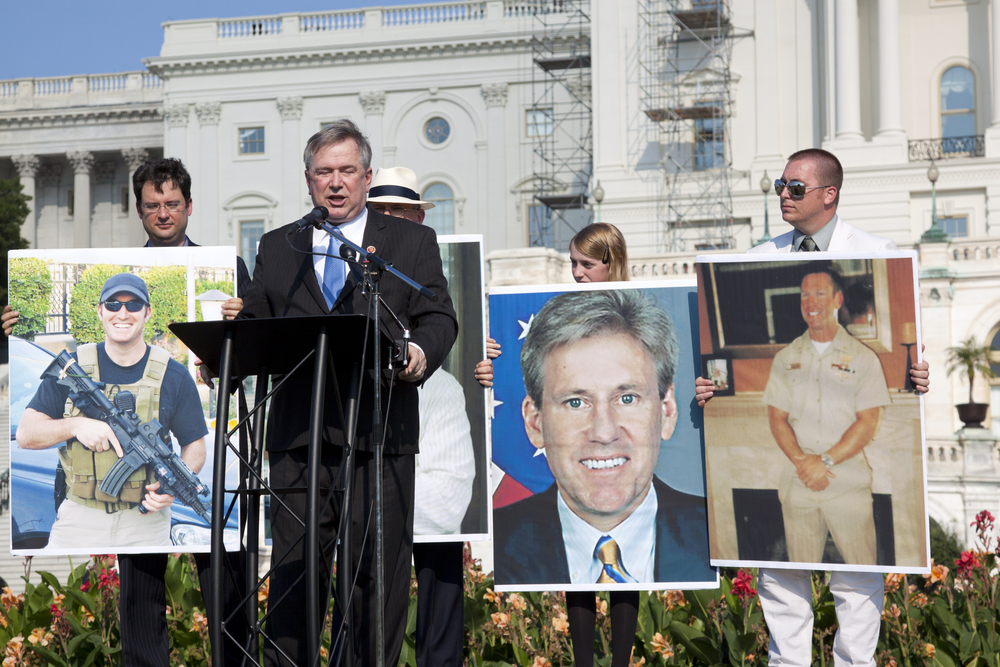 attack was still underway, it was assumed that it was another reaction to the anti-Islam film, which provoked the Cairo embassy attack. As time went on and more information surfaced, it appeared that the Benghazi was independently planned and unrelated to the film. In the process of discovery, mixed reports were issued by the administration, producing some initial confusion among the public.
attack was still underway, it was assumed that it was another reaction to the anti-Islam film, which provoked the Cairo embassy attack. As time went on and more information surfaced, it appeared that the Benghazi was independently planned and unrelated to the film. In the process of discovery, mixed reports were issued by the administration, producing some initial confusion among the public. effort to tailor reports of the attack so as to avoid any responsibility by the President or his Secretary of State. Other charges indicated that Secretary Clinton had either purposely or ineptly failed to protect the embassy and mismanaged the response to the attack once it began. More radical critics even alleged Secretary Clinton knew about the attack in advance but kept it secret from the embassy staff–and when the Air Force wanted to help, she told them not to do so.
effort to tailor reports of the attack so as to avoid any responsibility by the President or his Secretary of State. Other charges indicated that Secretary Clinton had either purposely or ineptly failed to protect the embassy and mismanaged the response to the attack once it began. More radical critics even alleged Secretary Clinton knew about the attack in advance but kept it secret from the embassy staff–and when the Air Force wanted to help, she told them not to do so.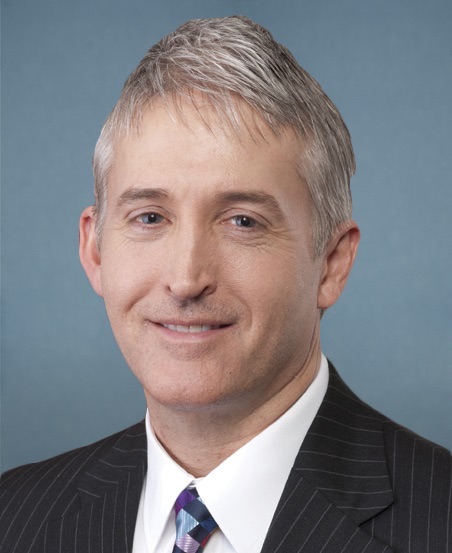 Carolina, said his committee exists because the focus of the previous seven committees that investigated the attacks were “narrow in scope.” He said that his committee’s investigations are more comprehensive, including plans to interview a total of 70 people and review 50,000 “new” documents. New documents include nearly 8,000 emails sent by Ambassador Chris Stevens, whom Gowdy called a “prolific emailer.”
Carolina, said his committee exists because the focus of the previous seven committees that investigated the attacks were “narrow in scope.” He said that his committee’s investigations are more comprehensive, including plans to interview a total of 70 people and review 50,000 “new” documents. New documents include nearly 8,000 emails sent by Ambassador Chris Stevens, whom Gowdy called a “prolific emailer.”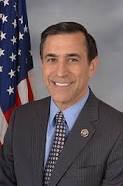 funding; in 2012, they cut another $331 million. [Darrell] Issa once personally voted to cut almost 300 diplomatic security positions. In 2011, after one of many fruitless trips to the Hill to beg House Republicans for resources, an exhausted, prophetic Hillary Clinton warned that cuts to embassy spending “will be detrimental to America’s national security.”
funding; in 2012, they cut another $331 million. [Darrell] Issa once personally voted to cut almost 300 diplomatic security positions. In 2011, after one of many fruitless trips to the Hill to beg House Republicans for resources, an exhausted, prophetic Hillary Clinton warned that cuts to embassy spending “will be detrimental to America’s national security.”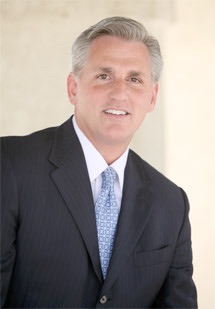 succeed John Boehner as Speaker of the House, publicly announced the real problem the investigations were intended to solve. Challenged by a conservative interviewer to name anything the Congress had achieved, McCarthy replied:
succeed John Boehner as Speaker of the House, publicly announced the real problem the investigations were intended to solve. Challenged by a conservative interviewer to name anything the Congress had achieved, McCarthy replied: Benghazi special committee, a select committee. What are her numbers today? Her numbers are dropping. Why? Because she’s un-trustable. But no one would have known any of that had happened had we not fought and made that happen.
Benghazi special committee, a select committee. What are her numbers today? Her numbers are dropping. Why? Because she’s un-trustable. But no one would have known any of that had happened had we not fought and made that happen.
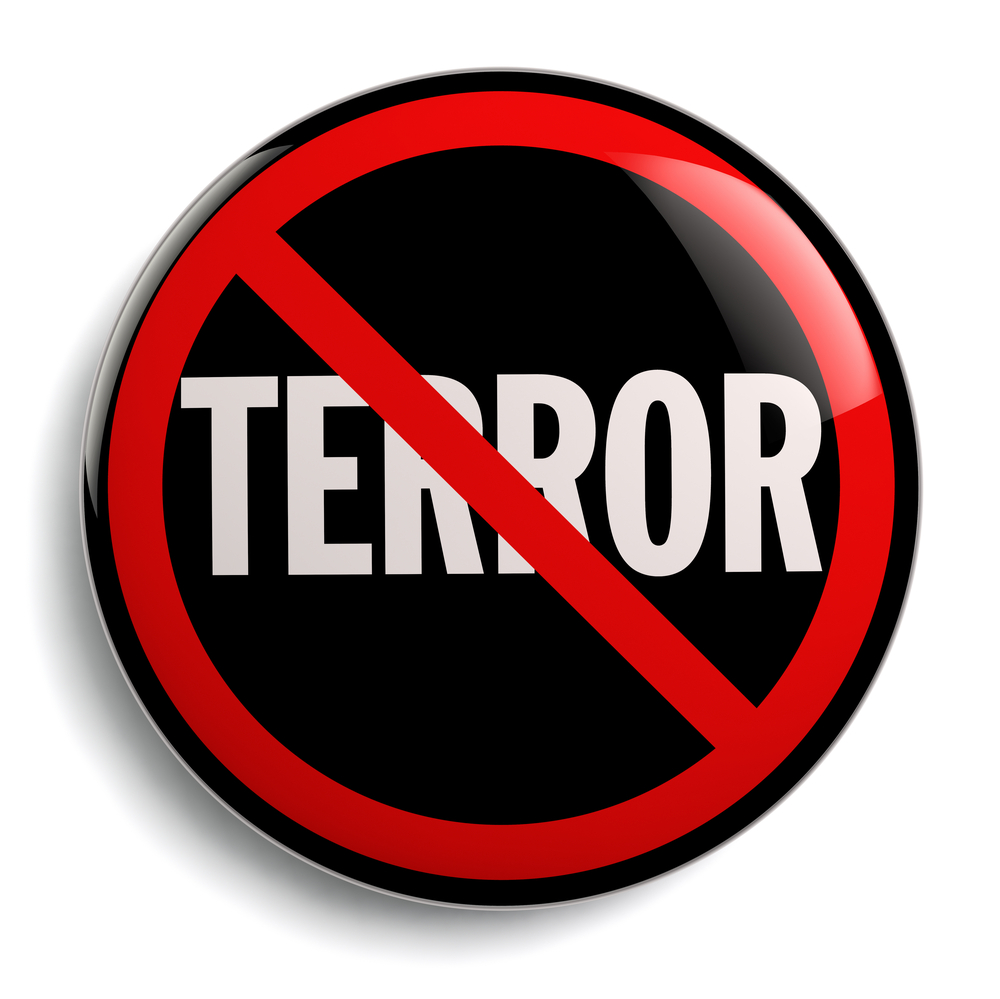 our freedoms to allow the authorities to fight terrorists here in America.
our freedoms to allow the authorities to fight terrorists here in America.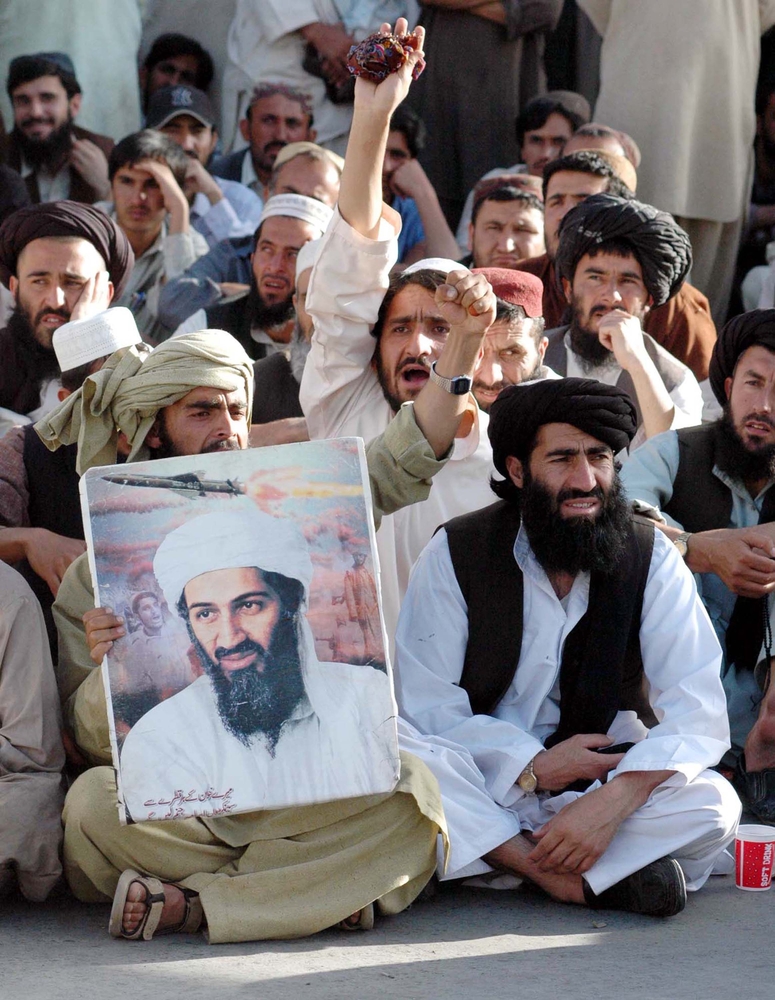 Terror, since there is no Terror Republic or Union of Terror. So the War of Terror initially identified Iraq as the enemy even though they had no involvement in the 9/11 attacks, nor were they planning to make war on the USA.
Terror, since there is no Terror Republic or Union of Terror. So the War of Terror initially identified Iraq as the enemy even though they had no involvement in the 9/11 attacks, nor were they planning to make war on the USA.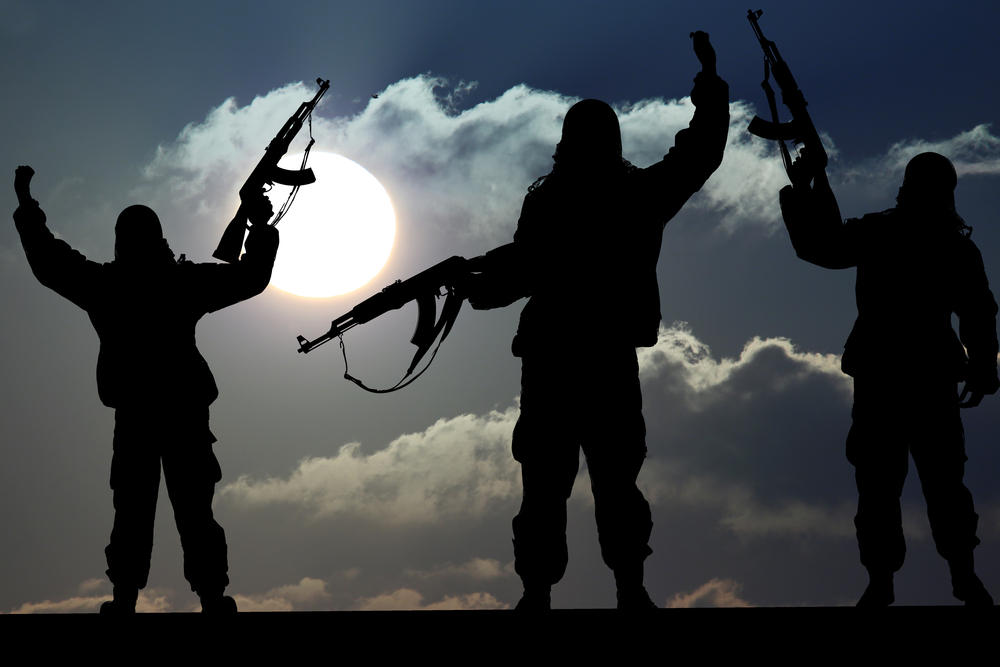 crush.” It is intended as an insult and a denial of the nationhood suggested by the the term Islamic State in the abbreviations, ISIS or ISIL. Ironically, whenever we use the terms ISIS or ISIL, we are granting statehood to the terrorist movement known as Daesh by those more directly confronting it.
crush.” It is intended as an insult and a denial of the nationhood suggested by the the term Islamic State in the abbreviations, ISIS or ISIL. Ironically, whenever we use the terms ISIS or ISIL, we are granting statehood to the terrorist movement known as Daesh by those more directly confronting it. “Christian terrorists,” drive-by shootings, drunk drivers, lightning, or prescription-drug overdoses. While the risk is above zero, it is tiny.
“Christian terrorists,” drive-by shootings, drunk drivers, lightning, or prescription-drug overdoses. While the risk is above zero, it is tiny. businesses without the knowledge, let alone permission, or those who live or work there. Libraries can be forced to tell government agents what books you have taken from the library–and they are prohibited for letting you know that happened. The Act provides for sophisticated monitoring of telephones and emails.
businesses without the knowledge, let alone permission, or those who live or work there. Libraries can be forced to tell government agents what books you have taken from the library–and they are prohibited for letting you know that happened. The Act provides for sophisticated monitoring of telephones and emails.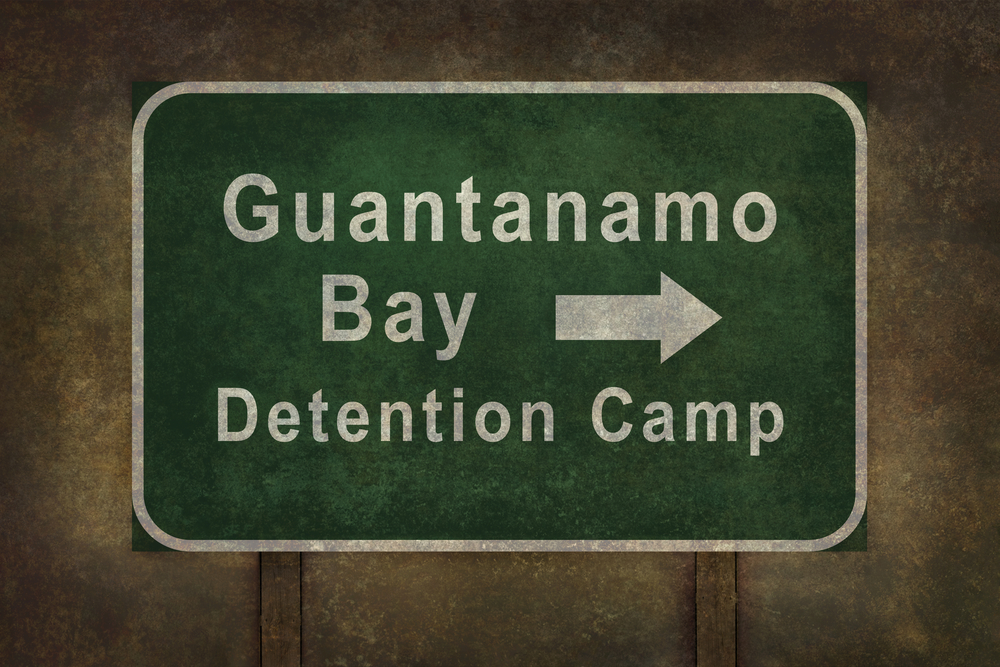 in secret military tribunals. There is no guarantee of a trial by jury, no right to examine evidence, and an absense of other rights guaranteed by the Constitution.
in secret military tribunals. There is no guarantee of a trial by jury, no right to examine evidence, and an absense of other rights guaranteed by the Constitution. position to verify or deny such claims, but I would point out that criminal acts, even acts of terrorism, have been dealt with effectively prior to the Patriot Act. In an earlier post on the US Invasion of Iraq in 2003, I reminded us of the 1993 terrorist attack on the World Trade Center. In that instance, President Clinton chose to frame the attack as a crime, and the existing law enforcement agents went into action. Eventually, the attackers were identified, arrested, tried, and punished. No Constitutional rights were set aside in that instance.
position to verify or deny such claims, but I would point out that criminal acts, even acts of terrorism, have been dealt with effectively prior to the Patriot Act. In an earlier post on the US Invasion of Iraq in 2003, I reminded us of the 1993 terrorist attack on the World Trade Center. In that instance, President Clinton chose to frame the attack as a crime, and the existing law enforcement agents went into action. Eventually, the attackers were identified, arrested, tried, and punished. No Constitutional rights were set aside in that instance.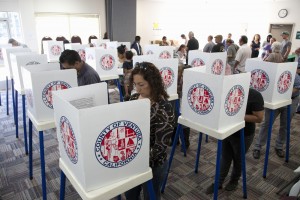
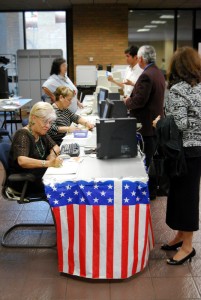
 concealed handgun license or a voter card provided by the state. It does not include student IDs as a valid form of photo identification. It also requires voters who were forced to cast a provisional ballot to produce a valid piece of identification within six days of the election in which they hope to vote.
concealed handgun license or a voter card provided by the state. It does not include student IDs as a valid form of photo identification. It also requires voters who were forced to cast a provisional ballot to produce a valid piece of identification within six days of the election in which they hope to vote.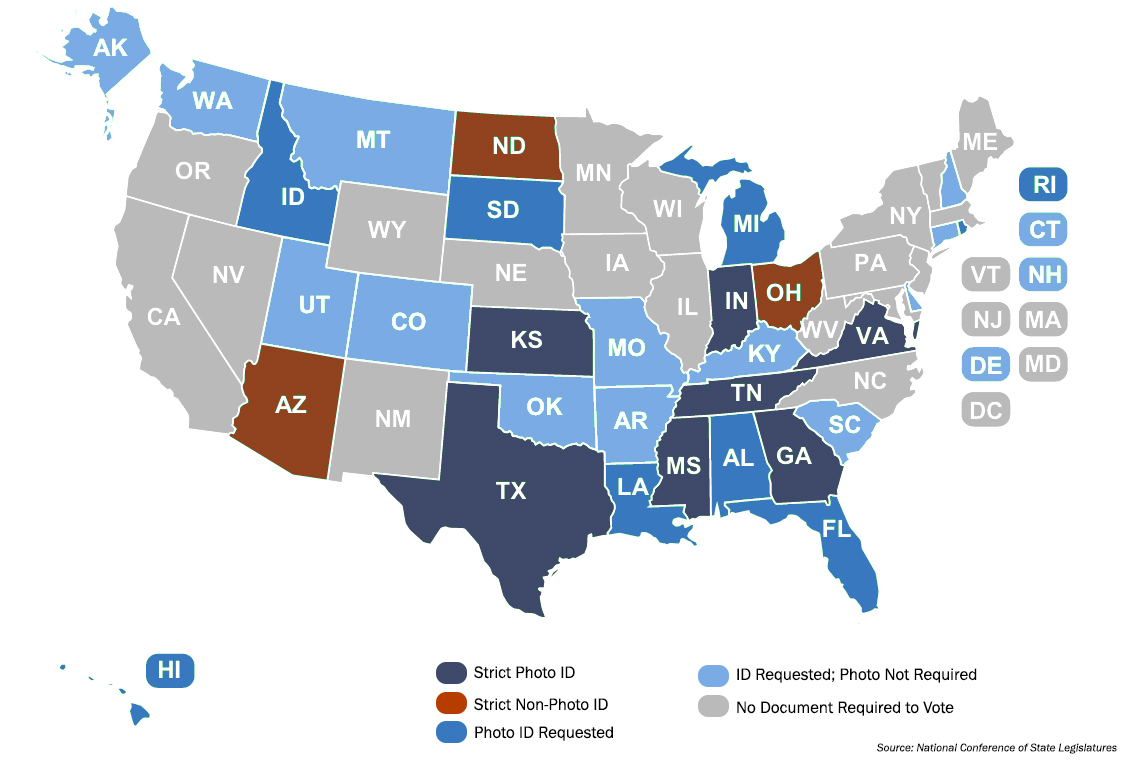
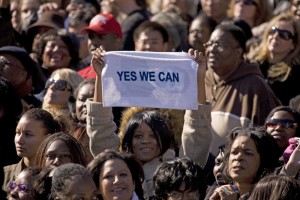 y Department of Motor Vehicle office. Shortly thereafter, the Republican governor announced plans to shut down all the DMV offices in eight of ten counties with predominantly African American residents–known as Alabama’s Black Belt–also known for a strong tendency to vote Democratic. The governor rescinded his plan in response to strong negative publicity.
y Department of Motor Vehicle office. Shortly thereafter, the Republican governor announced plans to shut down all the DMV offices in eight of ten counties with predominantly African American residents–known as Alabama’s Black Belt–also known for a strong tendency to vote Democratic. The governor rescinded his plan in response to strong negative publicity.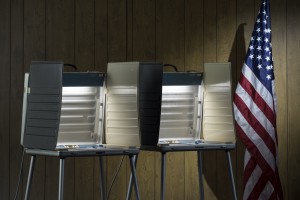 concluded that 35,000 eligible voters were deterred from voting by the warning anyway. They were convinced they would be turned away from the polls.
concluded that 35,000 eligible voters were deterred from voting by the warning anyway. They were convinced they would be turned away from the polls.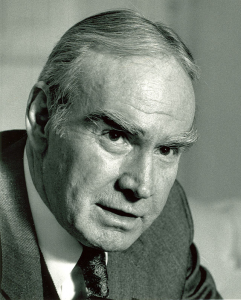 his driver’s license lapse and found his identification card as a Texas Christian University faculty member would no longer legitimize him as a legal citizen-voter in the Lone Star state. Ironically, the suspicious would-be voter was Jim Wright, who served 34 years as a U. S. Congressman from Texas, and from 1987 to 1989, was the Speaker of the United States House of Representatives. Still, you can’t be too careful.
his driver’s license lapse and found his identification card as a Texas Christian University faculty member would no longer legitimize him as a legal citizen-voter in the Lone Star state. Ironically, the suspicious would-be voter was Jim Wright, who served 34 years as a U. S. Congressman from Texas, and from 1987 to 1989, was the Speaker of the United States House of Representatives. Still, you can’t be too careful. would have to bear the cost of providing the IDs without charge. Other states have experienced similar costs.
would have to bear the cost of providing the IDs without charge. Other states have experienced similar costs.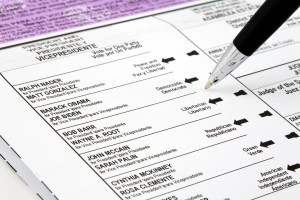
 to stop me from selling you my blank absentee ballot. Or you could hold a gun to my head while dictating how I should vote—a practice frowned on in most polling places. Or maybe you are just voting the way someone tells you to.
to stop me from selling you my blank absentee ballot. Or you could hold a gun to my head while dictating how I should vote—a practice frowned on in most polling places. Or maybe you are just voting the way someone tells you to.